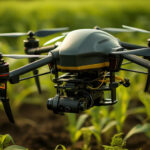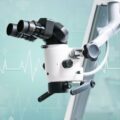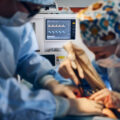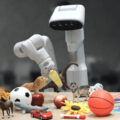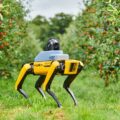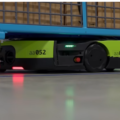Robots, increasingly ubiquitous in our world, rely on a multitude of “senses” to navigate, interact, and perform tasks effectively. These sensors, acting as the robot’s eyes and ears, gather crucial information about the environment, enabling them to make informed decisions and complete their assigned functions. This blog post serves as a robotics sensor cheat sheet, providing a concise overview of common sensor types and their applications:
1. Unveiling the World with Vision:
- Cameras: Like our own eyes, cameras capture visual data (images and videos) for various purposes. Robots use them for object recognition, navigating their surroundings, and manipulating objects precisely.
- LiDAR (Light Detection and Ranging): Imagine a 3D map generated by lasers! LiDAR sensors do exactly that, creating detailed maps of the environment. This enables robots to detect obstacles, plan their paths efficiently, and accurately measure objects.
- Depth Cameras: These sensors specialize in measuring distances to objects, making them ideal for tasks like grasping and manipulating objects at close range.
2. Feeling the Surroundings:
- Ultrasonic Sensors: Similar to bats using echolocation, robots utilize ultrasonic sensors. These sensors emit and detect sound waves to sense nearby objects, aiding in obstacle avoidance and short-range navigation.
- Infrared (IR) Sensors: Imagine robots seeing in the dark! IR sensors detect heat signatures, allowing robots to “see” in low-light conditions or for night vision applications.
- Touch Sensors: Just like our sense of touch, touch sensors detect physical contact. This is crucial for collision detection, confirming successful grasping of objects, and enabling robots to manipulate objects with appropriate force.
3. Mastering Movement and Position:
- Encoders: These act like tiny odometers, measuring the rotation of a motor or joint. By providing feedback on precise movements, encoders enable robots to maintain control and move with accuracy.
- Gyroscopes: Imagine a robot balancing on a tightrope! Gyroscopes help robots maintain balance and stability by detecting their angular rotation and orientation.
- Accelerometers: These sensors detect linear acceleration, essentially feeling how fast and in which direction the robot is moving. This information is vital for motion detection, tilt sensing, and preventing robots from falling.
4. Sensing the Environment:
- Temperature Sensors: Just like a thermostat, temperature sensors measure the surrounding temperature. This is crucial for environmental monitoring, process control in manufacturing, and ensuring robot safety.
- Pressure Sensors: Imagine a robot gardener measuring water pressure! Pressure sensors measure air or fluid pressure, used for tasks like controlling the grasping force of objects, detecting leaks, and estimating altitude for aerial robots.
- Humidity Sensors: These sensors measure the moisture content in the air, essential for robots operating in sensitive environments like agriculture or for preventing corrosion in robots exposed to moisture.
5. Specialized Senses for Specific Tasks:
- Force/Torque Sensors: Imagine a robot chef delicately whisking an egg! Force/torque sensors measure applied force or torque, crucial for tasks requiring delicate manipulation or interaction with the environment.
- Chemical Sensors: These sensors act like robot noses, detecting specific gases or chemicals. This is useful for environmental monitoring, leak detection, and identifying hazardous materials.
Choosing the Right Sensor:
Selecting the appropriate sensors for your robot depends on several key factors:
- Application: What task is the robot designed to perform?
- Environment: What are the lighting, temperature, and other environmental conditions the robot will operate in?
- Accuracy and Precision: How precise and accurate do the sensor measurements need to be?
- Cost and Availability: Consider the budget and availability of different sensor options.
Understanding the various types of sensors and their applications empowers you to equip your robot with the appropriate “senses” for success. With the right sensors in place, robots can effectively perceive their surroundings, make informed decisions, and complete their tasks with precision and efficiency.
